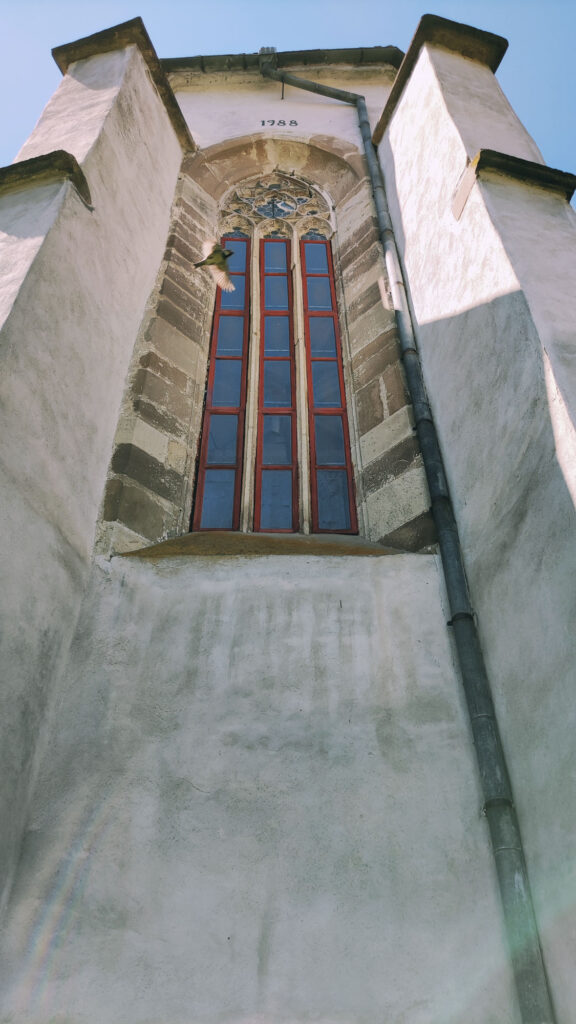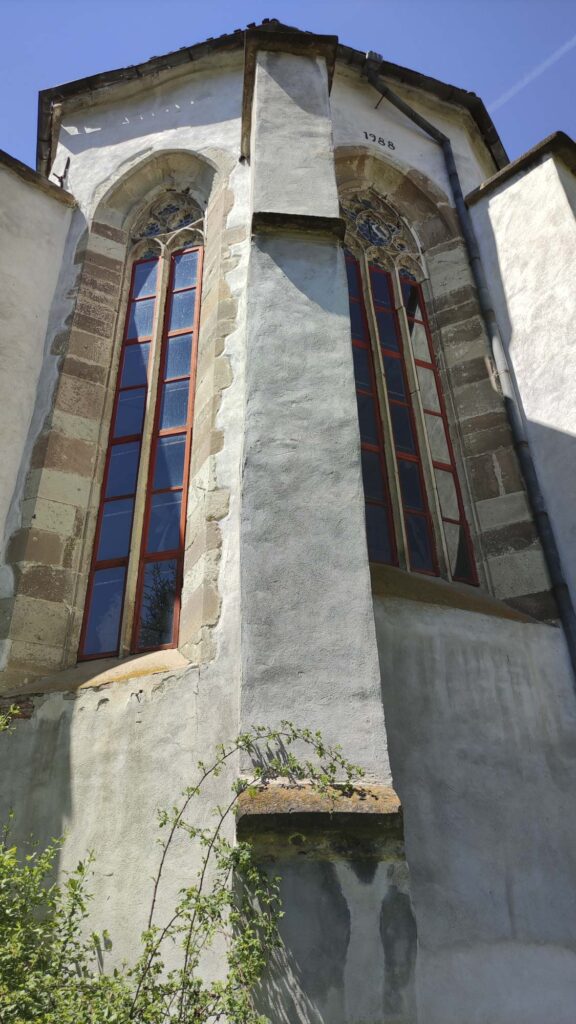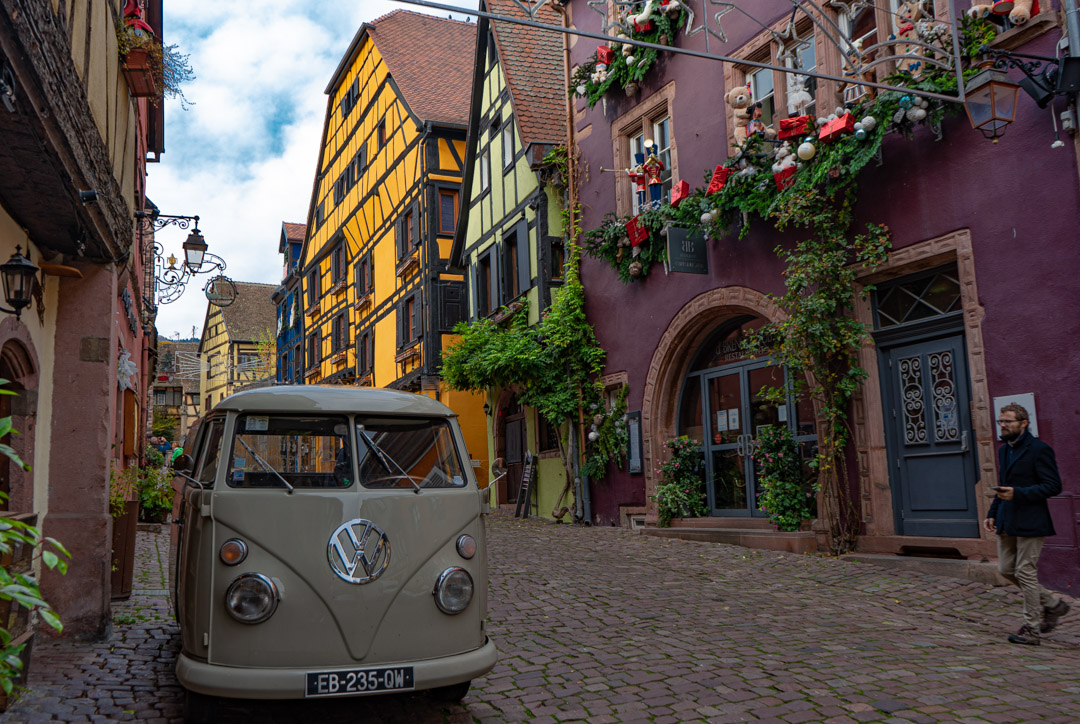In Transylvania it is worth stopping in almost every village. We discovered recently a wonderful accommodation place in Cloașterf and in our way there we decided to spend a little time in a few more locations in Transylvania. We prepared a list with at least 4 villages where to stop and admire the natural beauties and, of course, their fortified churches – true architectural monuments.
Biertan – UNESCO Site
The main tourist attraction in Biertan is the fortified church. Probably the most famous in Romania. It was built at the beginning of the 16th century in the form of a late Gothic church-hall and has become a UNESCO World Heritage Site since 1993.
The elements inside are of an immeasurable value, whose story goes back for centuries. As you enter the church, your eyes will be attracted by the imposing altar with the 28 painted scenes, the pulpit from the 16th century, the artistically made pews in flat relief, etc. The access to the fortress is made through a covered staircase that passes by the Guard Tower (today a small bookstore is arranged here), and at the end of the stairs, in front of the church, there is a large stone on which, long ago, all the criminals were placed, so that the whole community was able to recognize them. With other words – they were executed.

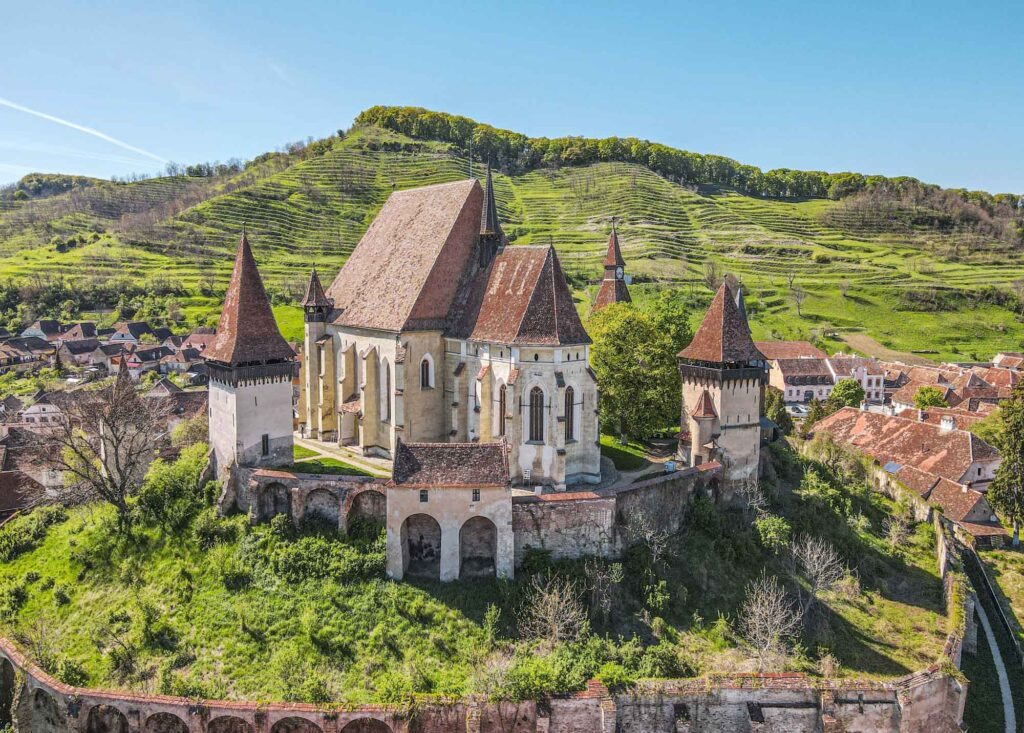
The visiting program:
April, May, September, October:
daily from 10:00 to 17:00, lunch break 13:00-14:00
June-August:
daily from 10:00 to 19:00, lunch break 13:00-14:00
November-March:
Tuesday-Sunday: 11:00 to 15:00
The entrance cost: 15 lei for one person.
The first mention of the village Biertan in a document is from 1283. Throughout its history, Biertan was an important area in the region. It even disputed its place with Mediaș or Șeica Mare. For example, in 1519 there was a dispute between Mediaș and Biertan over the election of the royal county; in 1532 Biertan had 345 households while in Mediaș there were only 286. Biertan was for 295 years an episcopal residence. In Biertan there was a public bath; a paper mill etc. You understand that the history of the town and its inhabitants, in general, was a dramatic one only if you read short chronological data, not to mention details. Today, it is a quiet communal center, with peasants working every day. In the evenings they drink beer on the terraces opened in the center by small entrepreneurs to shelter tourists.


Also, Biertan is part of a network of bicycle and hiking trails. The bicycle routes pass through several villages in Transylvania.
Villages in Transylvania – The fortified church of Saschiz
According to the local authorities, Saschiz developed on the structure of a Neolithic settlement, defining a lasting form of habitat in the Bronze Age. The first written attestation of the village appears in the years 1308-1310. Currently, the commune is located in Mureș County, consists of three villages (Saschiz, Mihai Viteazu and Cloașterf) and has a population of 2,048 inhabitants. There are about 70 Saxons who still live in the area, most of them elderly people.

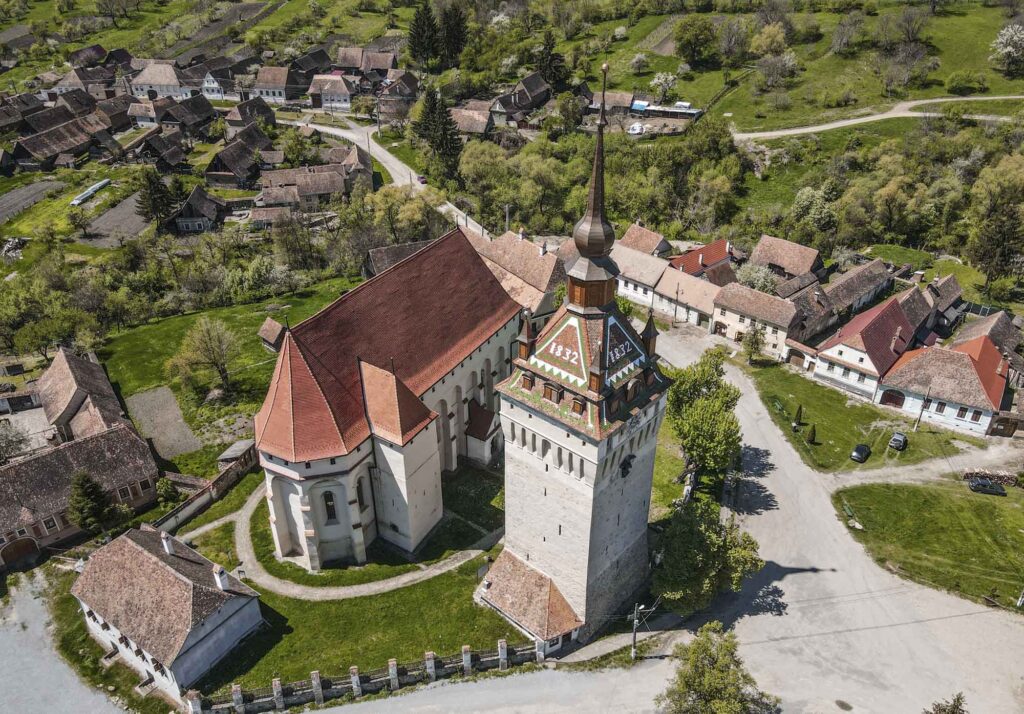
The fortified evangelical church, the main tourist attraction of the village, was built at the end of the 15th century. If you arrive here after a city-break in Sighișoara, you will have the impression of a deja-vu: the church tower visibly resembles the Clock Tower in the Sighișoara Fortress. A fire almost completely destroyed the defense tower, a bell tower since 1677. The actual appearance is due to its restoration in 1832.
This fortification is also an UNESCO patrimony since 1999.

The visiting program:
Tuesday-Wednesday: closed
Monday-Thursday-Friday-Saturday-Sunday: 11:00 to 15:00
You can call +40744179039 before arriving.
Also, while in Saschiz you will notice on the hill in the western part of the village the ruins of a fortress – the Peasant Fortress. It is another trace of the turmoil of the medieval era in this area. It was built in the 14th century to protect the inhabitants of Saschiz and six other adjoining communes, which helped to build it.

The fortified church Richiş
Richiș has been part of the Biertan commune since 1961. The German name of the village was “Reichesdorf”, meaning “village of the rich”.
“And do you know why? Because here is where the best wine in the country was made. Richiș wine was famous all over the world, whole wagons left for Bucharest, Budapest and even Constantinople, where the Turks drank it secretly. Then the communists came and everything collapsed. These hills were full of grapes. Now, there is only what we have left in the garden, but the wine has remained just as good”, said in 2014 Johann Schaas, 81 years old, one of the few Saxons left in the village, for Formula AS magazine.

Today you would not say that the village belongs to the rich, although it depends on what people mean today by “rich”. Instead, in Richiș live working people – at least this suggests the presence of agricultural machinery at the gates, with wheels full of mud – a sign that the soil is properly tilled.
The imposing fortified church puts Richiș on the map of all tourist routes with important villages in Transylvania. Initially, a Cistercian monastery was built here. Later, in the 1400s, it was transformed into a Catholic church. The evangelical cult was imposed in Richiș between 1540-1550. The fortification wall was added around 1500. The entrance into the church is made through the bell tower, which is said to have once existed a clock, and the church entrance is under the portal above which is carved the scene of the crucifixion, resumed on the altar.
I had previously read that the interior of the church is full of unique zoomorphic, vegetal and anthropomorphic motifs, captivating being the figure of the so-called “green man” seen in various poses, “little devils” as Schaas calls them. It is said that the “green man” was originally a pagan deity. However, its representation appears in many churches as an embodiment of the vitality, fertility of the earth, return to nature. It is possible that the inhabitants of Richiş thought about the fertility of the soil through the image of the “green man” – according to local legends.


If you arrive in Richiș, know that there is no a visiting schedule. It is best to call Mrs. Anna Gherghely in advance on +40 745 280 146.
Villages in Transylvania – The fortified church Pelișor
Pelișor is a village in Bârghiș commune, Sibiu county. The village attracted our attention through its fortified church, located on a hill, but also through an abandoned building at the end of the village, on which we understood the inscription: „Moara țărănească Reazim Pelișor” (“Reazim Pelisor Peasant Mill”).

The church was built in the 15th century as a hall church without a tower. The fortification was built at the end of the 15th century and the beginning of the 16th century, together with four defense towers. At present, only the imposing gate tower is preserved. The construction still retains a number of defensive systems, such as openings and firing slits. The interior of the church is dominated by the golden-white neoclassical altar from 1832. Instead, the late Baroque-style organ was moved after restoration to the evangelical church in Bucharest.


When we arrived in Pelișor it was already sunset. It was not very clear where we could approach the fortification. One of the locals, who was mowing the grass nearby, replied that “there is nothing to look at”. As mentioned before – Pelișor is also a quiet village today. It seems the time stopped here. Unlike the turmoil the village went through: disputes with Biertan over land; the prohibition of leaving the area without giving up at the entire property; fire at the end of the 18th century, which destroyed a part of the village etc.
Those wishing to visit the church are asked to call the Pop family in advance; they keep the keys: +40 770 263 851.

